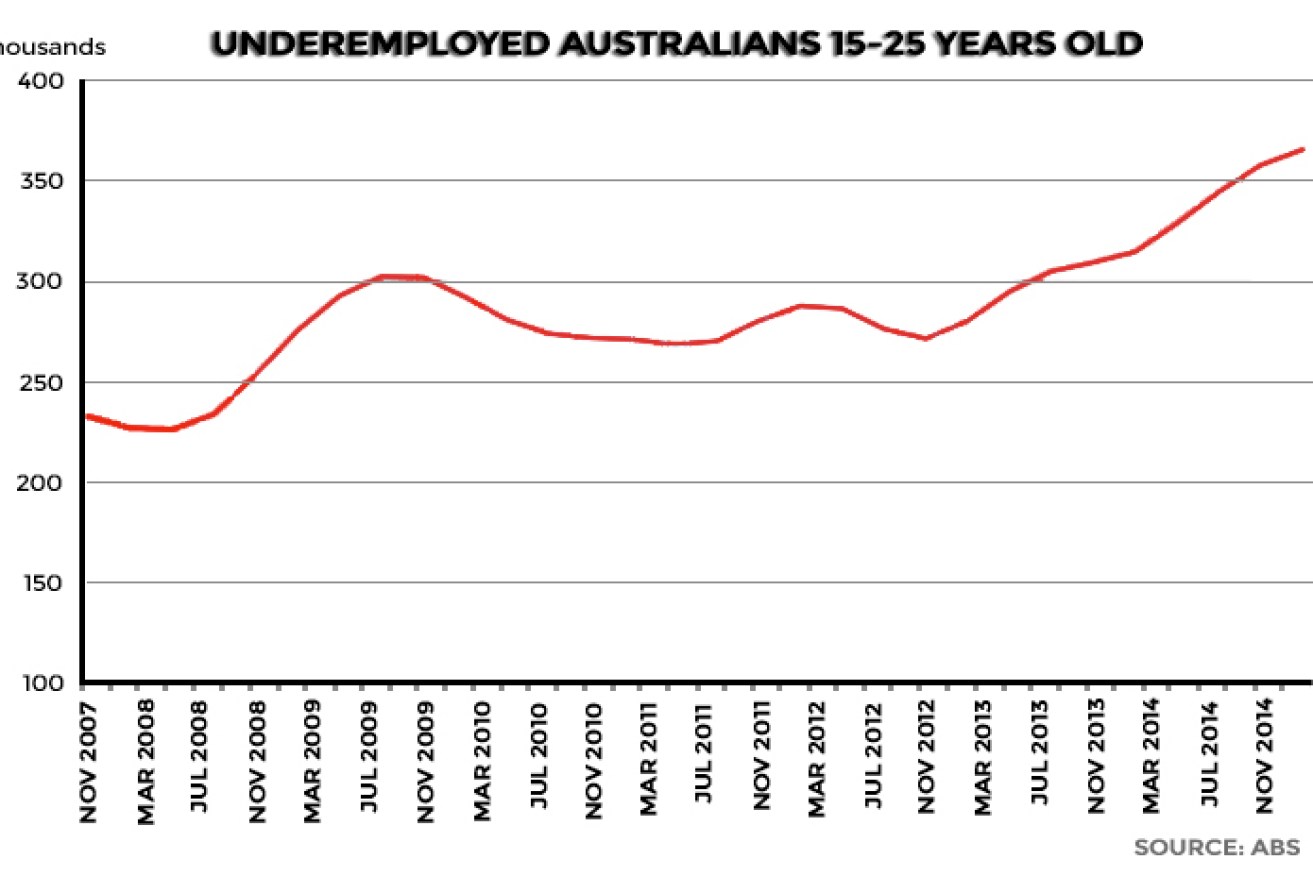Green shoots, but in all the wrong places


When the ABS released rosier-than-expected GDP numbers on Wednesday, a jump in the Aussie dollar told the story – the structural picture of the Australian economy has been gloomy, so currency traders and investors of all kinds don’t expect positive surprises.
But that’s what we had, with the economy expanding 0.9 per cent in the March quarter in seasonally adjusted terms. That’s a pretty decent growth rate if it could be maintained through the rest of the year, which it almost certainly can’t.
• GDP growth ‘a nice surprise’
• I wasn’t panicking about the economy … until now
Rather than indicating a 3.6 per cent clip for this calendar year, the figure is likely to help keep growth at about the 2.3 per cent rate recorded between the March quarter last year and the end of March this year.
So while markets welcomed the not-terrible result, the economy has a long way to go before it can get close to trend growth that would turn around the employment situation.
There are mixed signals in recent releases with regard to jobs. The total number of hours worked in the economy appears to be heading strongly upward (see chart below), but many of those hours are going to already-employed workers and bypassing groups such as the 15-24 year olds who have been increasingly unemployed or under-employed (see second chart below).
Moreover, not all GDP is good GDP when it is based around borrowing and spending more of other people’s money. And sadly there are signs in the ABS data that Australians are finding this habit almost impossible to kick.
The positive contribution to GDP from the ‘financial and insurance’ sector was 0.5 percentage points, which was equal to the growth contributed by the mining sector, where volume increases in iron ore have gone some way towards offsetting low export prices.
So the financial and insurance boost remains a concern. Yes, borrowing and spending adds to consumption and, yes, it may boost confidence a little in the short-term. However, Australia’s already huge private debt burden should not be the foundation on which new economic growth is built.
Rather, we need to work more productively – there was a 0.1 per cent increase in the value of output per hour worked for the quarter, which is far too low – and among younger workers and female workers in particular, we just need more jobs.
When the government and opposition talk about jobs, they talk about investment. But the investment picture is not simple at present. Australia is seeing a huge slow-down in capital expenditure in the resources sector – the so-called ‘capex cliff’ – and there are few clear areas where new investment can create jobs to offset resources workers coming home after the long boom.
For the government, it’s a chicken-and-egg problem – it will need to talk up Wednesday’s data, and do its best to repair some of the lingering damage to confidence caused by its 2014 budget.
With more generous public spending built into the 2015 budget, and with the mildly stimulatory “jobs and small business” package announced in that budget, there is some chance it can breath a bit of life into domestic demand. And if that happens, nervous businesses may be coaxed into investing and creating jobs.

RBA governor Glenn Stevens will be preying the delicate green shoots will grow in to something substantial.
Australia has plenty of growing export markets on its doorstep – education exports, tourism, higher value-added food processing and the like – but putting on workers to take advantage of them can be a nerve-wracking prospect at present.
The Australian economy is struggling to digest the end of the mining boom – like the proverbial bulge in a python, some of that pain just needs to work its way through the system.
The new GDP data is among the most hopeful we’ve seen for some time, but that’s not to say it can’t be derailed – by the clumsy comments of politicians from either side of the house, or by bigger cracks appearing in the housing market.
For the moment, however, we should all hope that the temporary spike in the Australian dollar reverts to a longer-term fall. Many trade exposed businesses would have preferred to see the RBA cut rates earlier this week to help achieve that, but then Governor Glenn Stevens and his colleagues are more mindful than most of the delicate balance between reluctantly stoking property bubbles in parts of Sydney and Melbourne, and putting a big pin in the bubble by returning to non-emergency levels of interest rates.
Stevens won’t be doing that.
Along with the Abbott government, he’ll be holding his breath and hoping that the small green shoots of Wednesday’s GDP data grow into something more robust.










